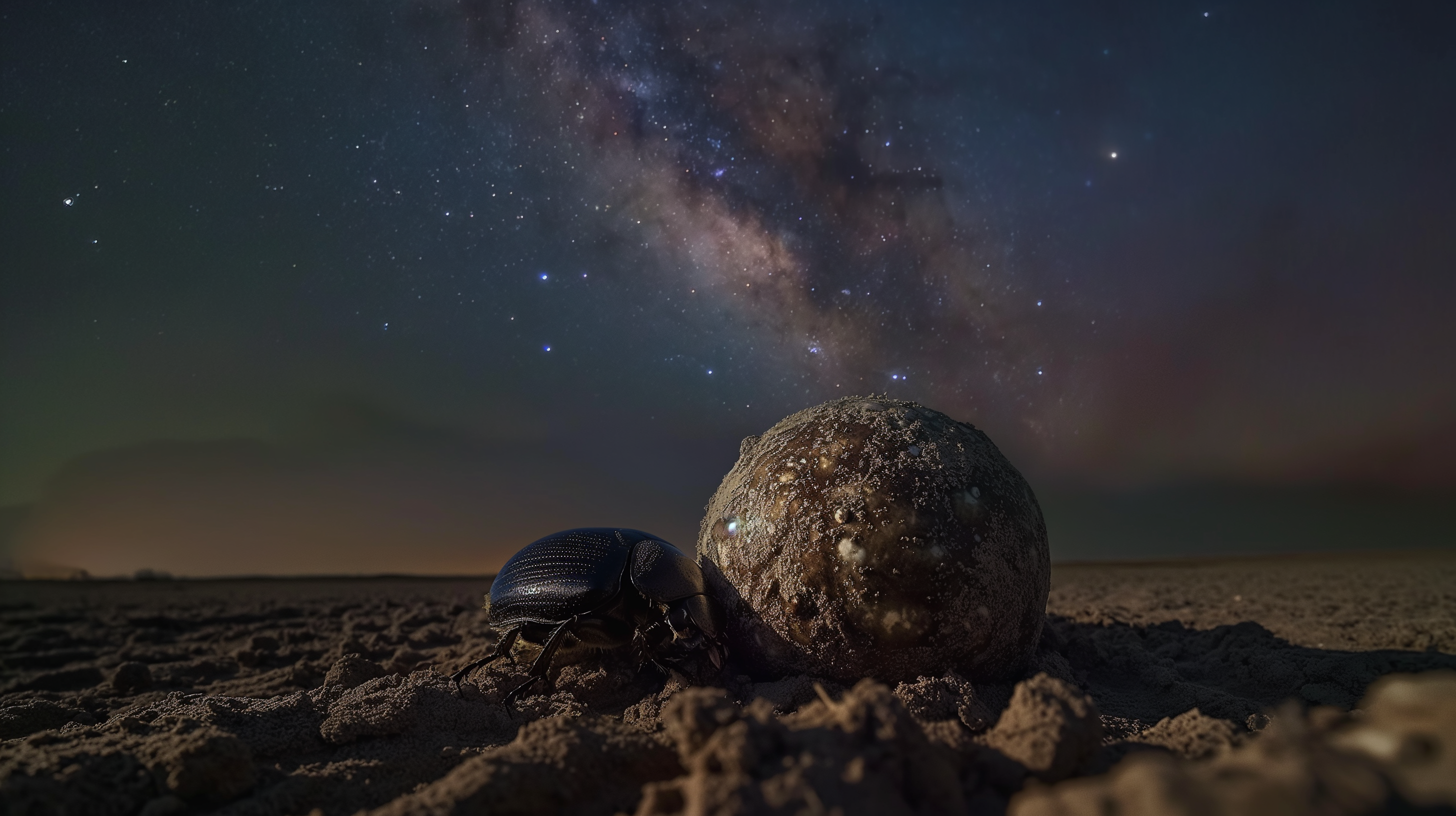
The stars as a guide

Billions of stars form the Milky Way in the clear night sky. A tiny dung beetle called Scarabaeus satyrus uses this natural spectacle for orientation in the dark. It has perfected this system over 130 million years. At night, dung beetles move their heads and bodies extensively as they roll dung balls across a field. To do this, they need a fixed orientation point in the night sky to help them steer in a straight line. Their tiny compound eyes make it difficult to see individual stars, especially when they are in motion while the Milky Way is clearly visible. The dung beetle is the first known species to use the Milky Way for navigation at night, using the constellation of stars as a guide to roll dung balls in a straight line away from their competitors.
The sense of orientation of Scarabaeus satyrus has now been studied by researchers led by Prof. Javaan Chahl from the University of South Australia. From this, the remote sensing engineers have developed a computer vision system that reliably measures the orientation of the Milky Way and is now being used to develop a navigation system. The engineers proved that, unlike individual stars, the large strip of light that forms the Milky Way is not affected by motion blur.
To do this, the researchers used a camera mounted on the roof of a vehicle to record images of the Milky Way while the vehicle was both stationary and moving. Using the information from these images, they have developed a computer vision system that reliably measures the orientation of the Milky Way, which is the first step towards building a navigation system.
In the next step, the researchers want to incorporate the algorithm into an orientation sensor and build it into a drone so that it can guide the aircraft during the night. “Such an orientation sensor could be a backup method for stabilizing satellites,” says Yiting Tao, lead author of the study. “It could also help drones and robots to navigate in low light, even when there is a lot of blurring due to movement and vibration.”
The vision of insects has long inspired us engineers, especially when it comes to navigation systems,” says Javaan Chahl. “Insects have been solving navigation problems for millions of years, including those that even the most advanced machines struggle with. And they've done it in a tiny little package. Their brains are made up of tens of thousands of neurons compared to billions of neurons in humans, and yet they still manage to find the best solutions.”
Original publication:
Tao, Y. et al.
Computer Vision Techniques Demonstrate Robust Orientation Measurement of the Milky Way Despite Image Motion
Biomimetics 2024, 9, 375
doi.org/10.3390/biomimetics9070375












